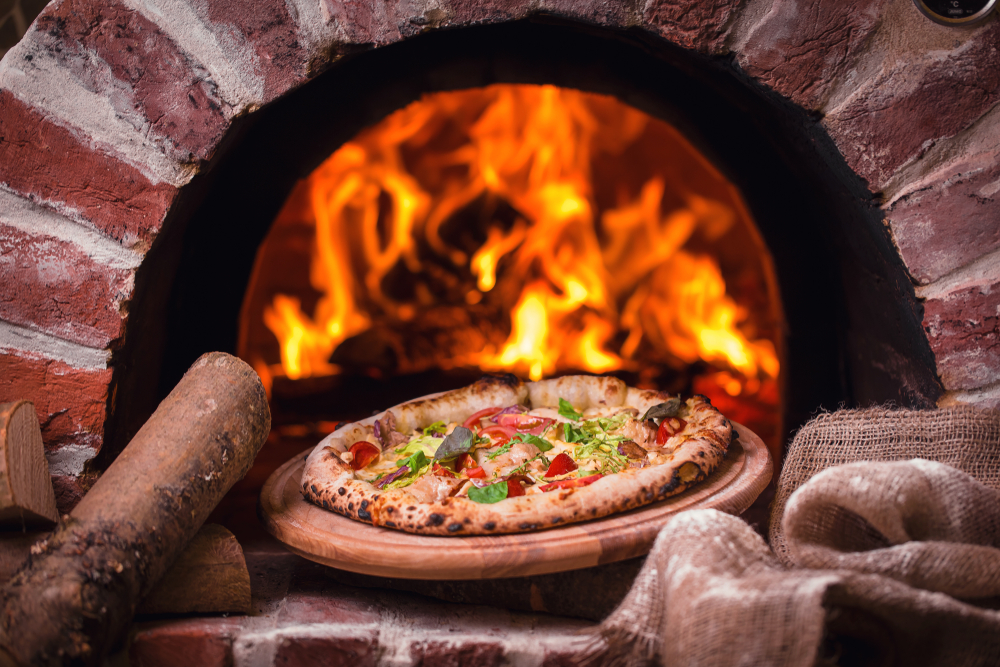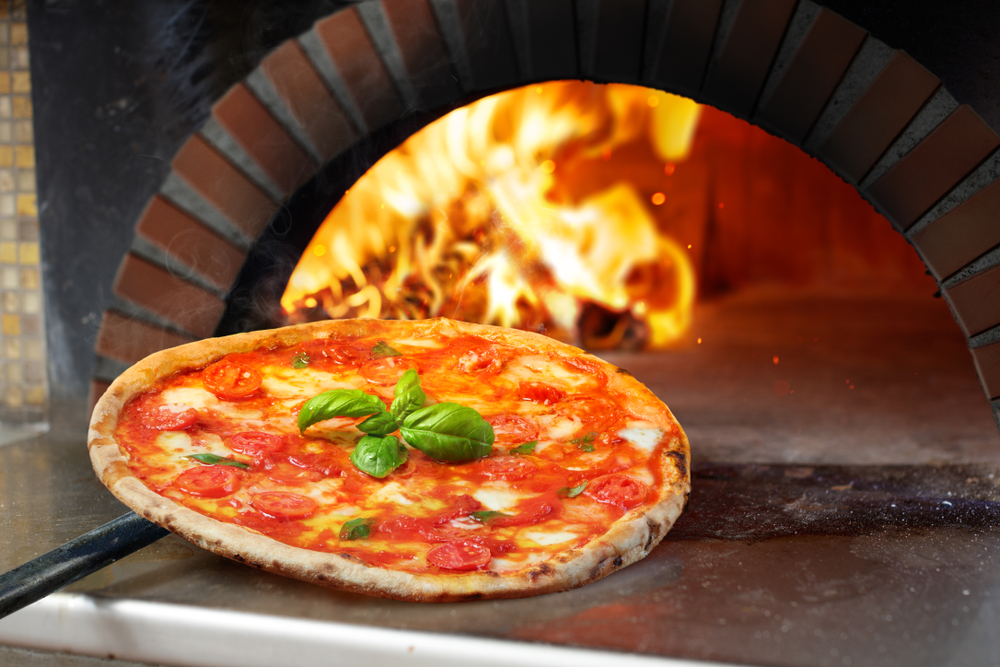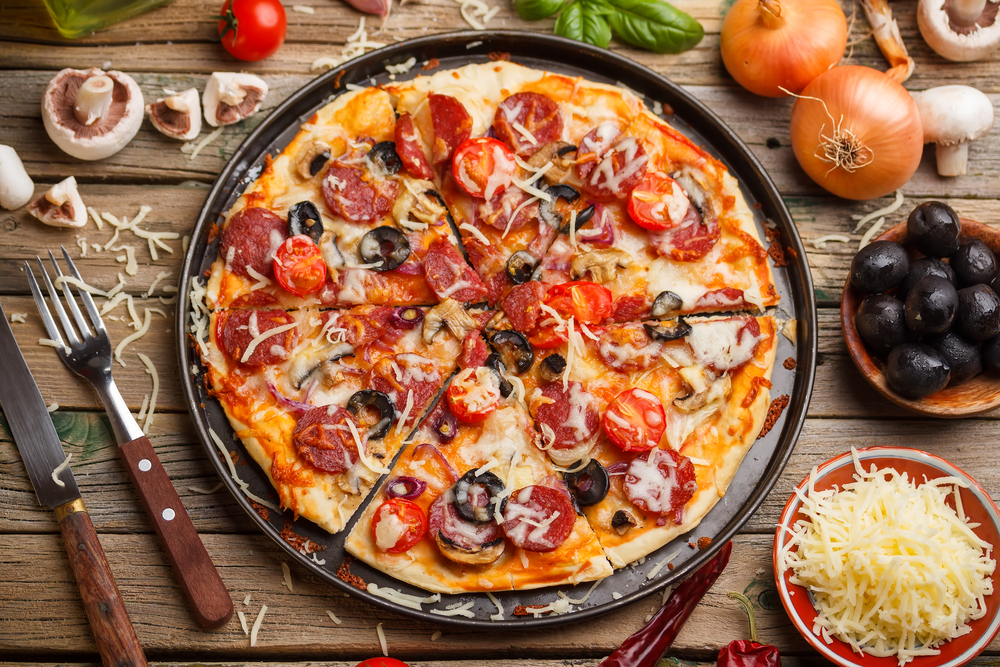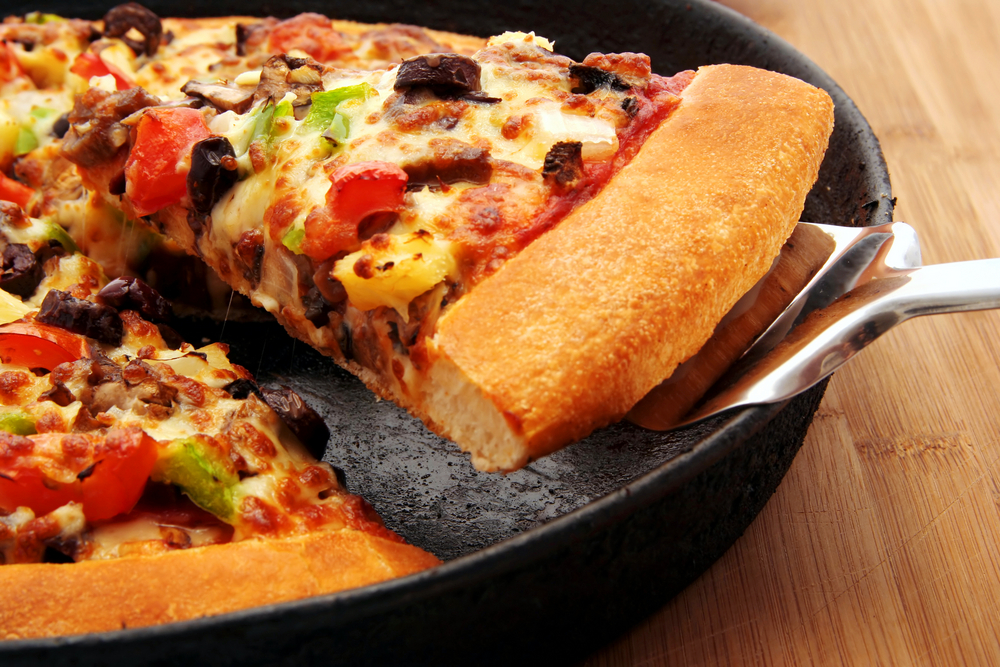Pizza is a dish that is adored by people all over the world, and many like creating it at home. However, there is much disagreement about whether to use a pizza stone or a pizza pan when making pizza.

It can be challenging to choose between the two because they each offer benefits and drawbacks.
Pizza stones are created to resemble the cooking surface of a classic brick oven and are constructed of natural materials like ceramic or stone.
Before the pizza is put on them, they are baked in the oven for a long time, which aids in producing a crispy crust.
Contrarily, pizza pans are often made of metal and are thinner than pizza stones. Although they are quicker to heat up and easier to use, they might not create as much crispiness as a pizza stone.
Personal preference ultimately determines whether to use a pizza pan or a pizza stone when preparing homemade pizza.
One may be a better fit than the other depending on the kind of crust you prefer and the level of ease you’re searching for.
In this post, we’ll examine the distinctions between pizza pans and stones and offer some advice for making pizza at home.
Pizza Stone
When it comes to making the perfect pizza, the baking surface plays a crucial role. One of the most popular options for achieving a crispy crust is a pizza stone.

In this section, we’ll take a closer look at pizza stones, including what they are, the types available, and the benefits and drawbacks of using them.
What is a Pizza Stone?
A pizza stone is a cooking tool used to bake pizza. It’s typically made of natural materials like ceramic, cordierite, or stoneware.
The stone is placed in the oven and preheated for a certain amount of time before the pizza dough is placed on top.
The porous surface of the stone absorbs moisture from the pizza dough, resulting in a crispy crust.
Types of Pizza Stones
There are several types of pizza stones available, each with its own unique properties. Here are some of the most common types:
- Ceramic: Ceramic pizza stones are the most popular type. They’re durable, affordable, and easy to use.
- Cordierite: Cordierite stones are known for their heat retention and even heat distribution. They’re also more durable than ceramic stones.
- Steel: Pizza steels are a newer type of pizza stone that is gaining popularity. They’re known for their ability to create a crispy crust and are often used in commercial pizza ovens.
Benefits of Using a Pizza Stone
Using a pizza stone has several benefits when it comes to baking pizza. Here are some of the most notable advantages:
- Crispy crust: The porous surface of the stone absorbs moisture from the pizza dough, resulting in a crispy crust.
- Even heat distribution: Pizza stones distribute heat evenly, ensuring that the pizza is cooked uniformly.
- Easy to use: Pizza stones are easy to use and require minimal preparation.
- Heat retention: Pizza stones retain heat well, which means that they can be used to cook multiple pizzas in a row without needing to be reheated.
Drawbacks of Using a Pizza Stone
While there are several benefits to using a pizza stone, there are also some drawbacks to consider. Here are some of the most notable disadvantages:
- Delicate: Pizza stones can be delicate and are prone to cracking if not handled carefully.
- Difficult to clean: Pizza stones can be difficult to clean, especially if food gets stuck to the porous surface.
- Personal preference: Some people prefer the convenience of a pizza pan or the taste of a pizza cooked in a wood-fired oven.
Pizza stones are a great option for achieving a crispy crust and even heat distribution when baking pizza.
However, they do have some limitations and may not be the best choice for everyone. It ultimately comes down to personal preference and budget.
Pizza Pan
When it comes to making pizza at home, using a pizza pan is a popular choice for many home cooks.
In this section, we will discuss the different types of pizza pans available, the benefits of using a pizza pan, and the drawbacks of using one.

Types of Pizza Pans
Pizza pans come in various sizes, shapes, and materials. The most common materials used for pizza pans are metal and aluminum.
Some pizza pans have a non-stick coating, making it easier to remove the pizza from the pan. There are also perforated pizza pans that have small holes in them, allowing for air to circulate and resulting in a crispy crust.
Pizza pans can have a raised edge, which is useful for making a thicker crust or deep-dish pizza.
Benefits of Using a Pizza Pan
One of the main benefits of using a pizza pan is the convenience it provides. It is easy to use and clean, making it a popular choice for home cooks.
Pizza pans with a non-stick coating make it easier to remove the pizza from the pan, and perforated pans with small holes allow for air to circulate, resulting in a crispy crust.
Pizza pans with raised edges are useful for making a thicker crust or deep dish pizza.
Drawbacks of Using a Pizza Pan
One drawback of using a pizza pan is that it may not produce the same crispy crust that a ceramic pizza stone or pizza steel would.
The small holes in perforated pans may also cause the pizza to stick to the pan. Pizza pans with raised edges may result in a thicker crust, which may not be desirable for those who prefer a thin and crispy crust.
Additionally, pizza pans may not be suitable for making Neapolitan-style pizza, which requires very high heat and a smooth surface to slide the pizza onto the pizza peel.
Pizza pans are a convenient and affordable option for making pizza at home. They are easy to use and clean and come in various sizes and materials.
However, if you are looking for a crispy crust or want to make Neapolitan-style pizza, a pizza pan may not be the best choice.
Pizza Stone vs Pizza Pan
When it comes to making homemade pizza, choosing between a pizza stone and a pizza pan can be a tough decision.

Both have their advantages and disadvantages, and it ultimately comes down to personal preference.
In this section, we will explore the differences between a pizza stone and a pizza pan, when to use a pizza stone, and when to use a pizza pan.
Differences Between a Pizza Stone and Pizza Pan
The main difference between a pizza stone and a pizza pan is the way they cook the pizza. A pizza stone is made from materials like ceramic or stone, which absorb heat and then transfer it evenly to the pizza dough.
This results in an evenly cooked crust with no burnt or undercooked spots. On the other hand, a pizza pan is made from metal and takes several minutes to heat up before it starts cooking the crust. As a result, the pizza may not be as crispy as it would be with a pizza stone.
Another difference between a pizza stone and a pizza pan is its weight. A pizza stone is heavier than a pizza pan and takes longer to preheat.
However, it retains heat better and can cook multiple pizzas in a row without losing its heat. A pizza pan, on the other hand, is lighter and easier to handle. It can also be used for other dishes besides pizza.
When to Use a Pizza Stone
A pizza stone is ideal for those who want a crispy, evenly cooked crust. It is also great for those who want to cook multiple pizzas in a row.
A pizza stone takes longer to preheat, but once it is hot, it retains heat better than a pizza pan. This means that you can cook multiple pizzas in a row without losing heat.
When to Use a Pizza Pan
A pizza pan is ideal for those who want a quick and easy way to cook pizza. It heats up faster than a pizza stone and is lighter and easier to handle. It is also great for those who want to cook other dishes besides pizza.
However, a pizza pan may not produce the same crispy crust as a pizza stone.
In terms of cheese, both a pizza stone and a pizza pan can be used to melt cheese on top of the pizza. However, the taste difference between a pizza stone and a pizza pan is noticeable.
A pizza stone produces a crispy, evenly cooked crust, while a pizza pan may not produce the same results.
Finally, speed is a factor to consider when choosing between a pizza stone and a pizza pan. A pizza pan heats up faster than a pizza stone and is easier to handle.
However, a pizza stone retains heat better and can cook multiple pizzas in a row without losing its heat.
Both a pizza stone and a pizza pan have their advantages and disadvantages. It ultimately comes down to personal preference and what type of pizza you want to make.
We hope this section has helped you make an informed decision on which one to use for your next homemade pizza.







Add comment